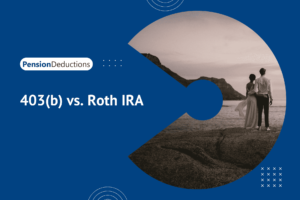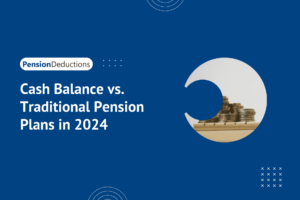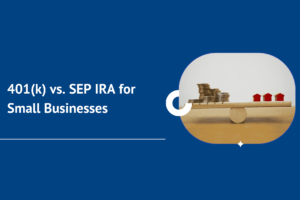
403(b) vs. Roth IRA
Learn the key differences between a 403(b) and Roth IRA in this comprehensive guide. Discover tax benefits, contribution limits, and investment options for your retirement plan.

Learn the key differences between a 403(b) and Roth IRA in this comprehensive guide. Discover tax benefits, contribution limits, and investment options for your retirement plan.

Explore the difference between a pension plan and a 401(k). Compare benefits, funding, control, and tax impacts to make the best choice for your retirement.

Discover top tax strategies for retirement income to maximize financial efficiency. Learn how to manage withdrawals, leverage Roth IRAs, and more.

Explore the 2025 Social Security COLA forecast with a 2.5% increase. Learn how this adjustment affects retirees and the factors influencing this year’s forecast.

Explore the best age to claim Social Security benefits 62 vs 67 vs 70 with our comprehensive guide on maximizing your retirement income.

Cash Balance vs. Traditional Pension Plans in 2024. Discover key differences in predictability, portability, tax benefits, and contributions for retirement planning.

Maximizing Your Tax Savings with Cash Balance Pension Plans When it comes to planning for retirement, maximizing tax savings is a smart move. One of

401(k) vs. SEP IRA for Small Businesses As a small business owner, selecting the right retirement plan for yourself and your employees is a critical

Retirement Plans for Small Business Owners As a small business owner, you probably wear a lot of hats. From managing employees to overseeing operations, it

Early Pension Plan Benefits When it comes to planning for your retirement, starting early can be one of the most beneficial decisions you make. An
Hi ,
The information you have provided is as follows:
Three year average income:
Participant’s age:
A participant with the above mentioned parameters can accumulate
(Lump Sum at Retirement Amount) till he reaches an assumed retirement age of (Retirement Age) . In the first year, a maximum contribution of (Maximum Contribution) can be made to the plan.
A plan can be incorporated at any time during the year, and within a certain time in the following year. The funding of the defined benefit plan can also happen any time before the company files its tax returns.
If you have employees, the IRS mandates you to make available a retirement plan for employees as well. Depending on the plan design, you will be required to contribute an amount of 3% to 7.5% of the employee wages in a profit sharing plan. We will consult with you to come up with the best plan design based on your circumstances and company demographics. Our Census Request Form will be emailed to you which has to be filled and sent back to info@pensiondeductions.com .
Please enter your email address below. A comprehensive report shall be emailed to you outlining the further steps you need to take in order to get started with a defined benefit plan.
Please note that these contribution amounts are approximate amounts and only for the first year of the plan. These amounts still need to be certified by an actuary and contributions should not be made based only on the amounts generated by the online calculator without consulting an actuary.
Request a call back from a Pension Consultant
Please enter your email address below. If you do not receive our email in a few minutes, please check your spam folder.
